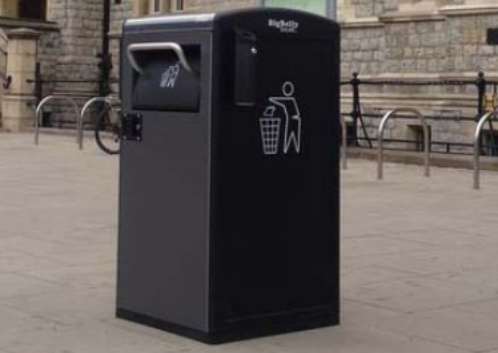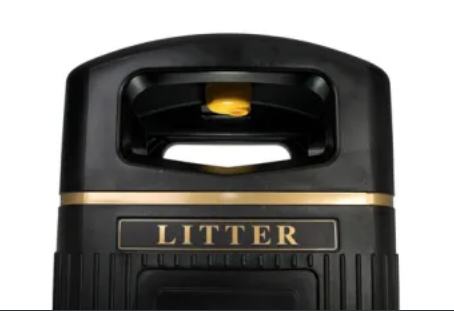You’ve heard of smart phones, smart TVs and event smart fridges. Now get ready for smart bins!
There are more than 1,000 public litter bins in Sutton. Making sure that our street litter bins aren't overflowing is challenging.
Demand for litter bins changes depending on:
- the season
- weather conditions
- public events
- many other factors
It's not possible for us to empty every bin every day. This would be immensely expensive, and would require a huge number of unnecessary vehicle journeys, resulting in avoidable carbon emissions.
Tackling this challenge is important if we are to achieve the ambitious targets we’ve set ourselves in our Environment and Waste Minimization Strategy and Corporate Plan.
There is a solution, and that is ‘smart bins’. We trialled smart bins in Sutton in 2019 and 2020. They can help us manage our street litter bins in a way that saves money, improves the street scene and benefits the environment.
Types of smart bins
There are many types of smart bins, but the ones being used in Sutton fall into two broad categories:
Solar compactor bins
- high capacity bins that use solar panels to power an internal compaction system
- they squash the litter enabling each bin to hold up to 10 times more litter than a traditional bin
- are used in particularly high footfall areas where bins become full very quickly

Existing or new litter bins fitted with fill level sensors
- a small wireless device is placed on the underside of the top of the bin.
- this device provides continuous monitoring and allows us to keep an eye on
- fill level
- temperature
- location
- whether the bin is still upright
- we can use this data to make emptying our bins as efficient as possible

.
Benefits of smart bins
Smart bin technology enables us to remotely monitor how full individual litter bins are.
Knowing the fill-level of a litter bin without having to visit the specific location makes it easier to allocate resources effectively. No more scheduled trips to empty a bin only to find it was a wasted trip as the bin’s got hardly anything in it. Instead, efforts can be focused on emptying bins that we know for a fact are reaching their capacity.
With the help of smart bins, we can:
- improve efficiency - using the resources available to us in a more focused and targeted way
- reduce the number of bins required - decluttering and improving the street scene
- drive down our carbon emissions - by doing away with the need to drive to bins that still have plenty of space in them
- encourage recycling - by ensuring litter bins aren’t over-flowing, residents will be encouraged to put the right thing in the right bin when they’re out and about
The proof is in the pudding - The Sutton High Street trial
In summer 2019, we trialled smart bins in Sutton High Street, with impressive results.
21 standard litter bins were replaced with 10 ‘compactor smart bins’. These squash the litter to fit more in and report remotely on fill levels,
- in the first four weeks of the trial, we collected 43,949 litres of waste
- there was a 90% reduction in collections
- levels of street cleanliness were not affected
- the street scene was improved and decluttered, particularly around Brighton Road and The Quadrant